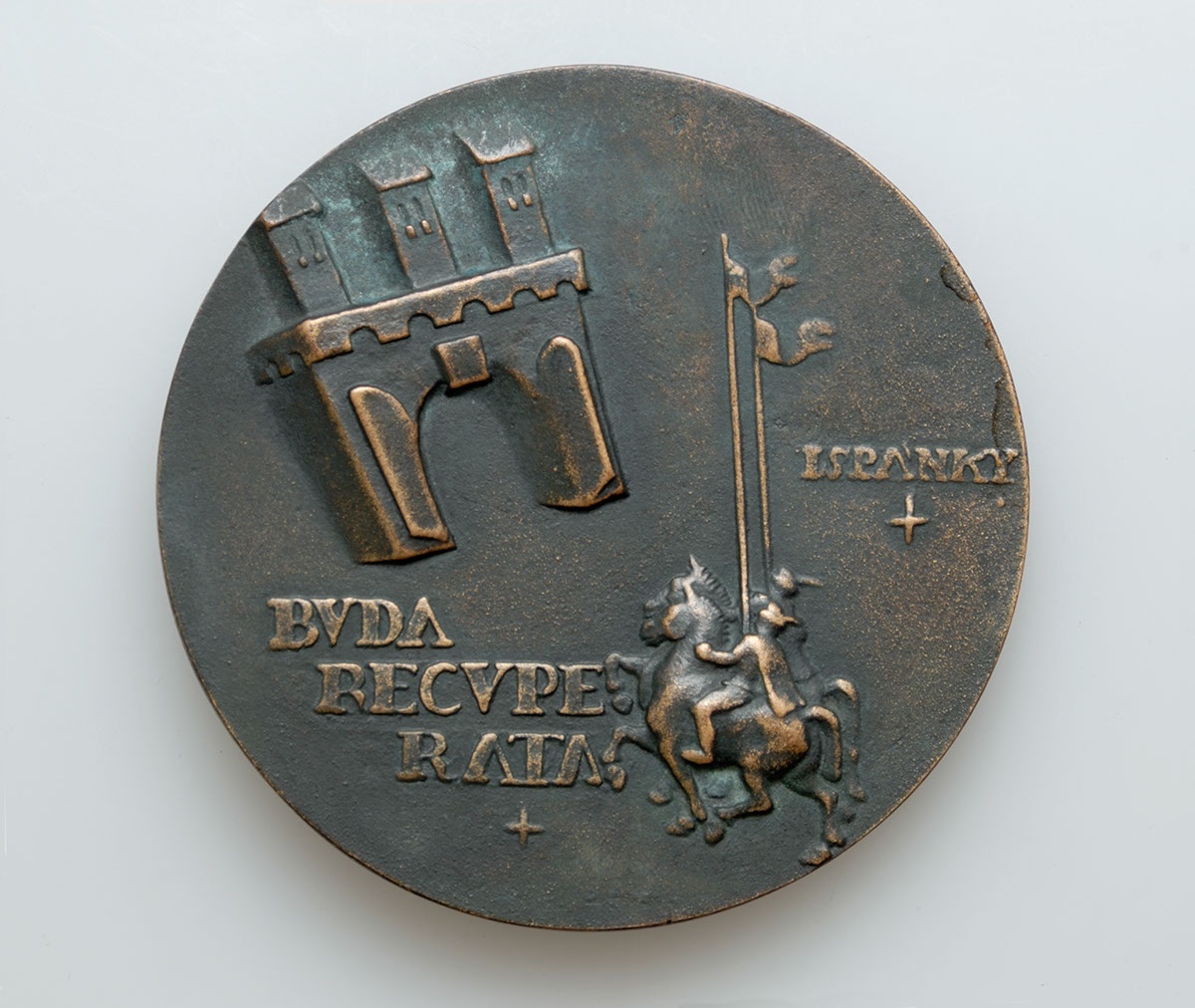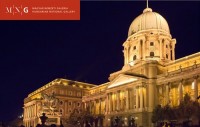In 1936, József Ispánki created two medals with the same theme for the 250th anniversary of the liberation of Buda. He won a competition with each (those of the capital and the Medal Lovers Association). Later, Ispánki assembled another work using the more successful compositions of the two versions. The emergence of isolated motifs with both Ispánki and his contemporaries can be attributed to the medallic art of their great ideal, Fülöp Ö. Beck. At the same time, Ispánki, while on scholarship in Rome, gained much inspiration from the Trecento, as did other artists. The stylized representation of Buda, taken from its coat of arms, with its appearance and proportions in relation to the figures, clearly reflects such an origin. Of course, the two riders only refer to the besiegers rather than depicting them. The flags on lances held upright emphasise their triumph. On the reverse, the motif of an angel advancing, holding a sword and a palm branch is used. Here, the figure is seen from the side and the artist has exchanged the palm for a double cross.
en

